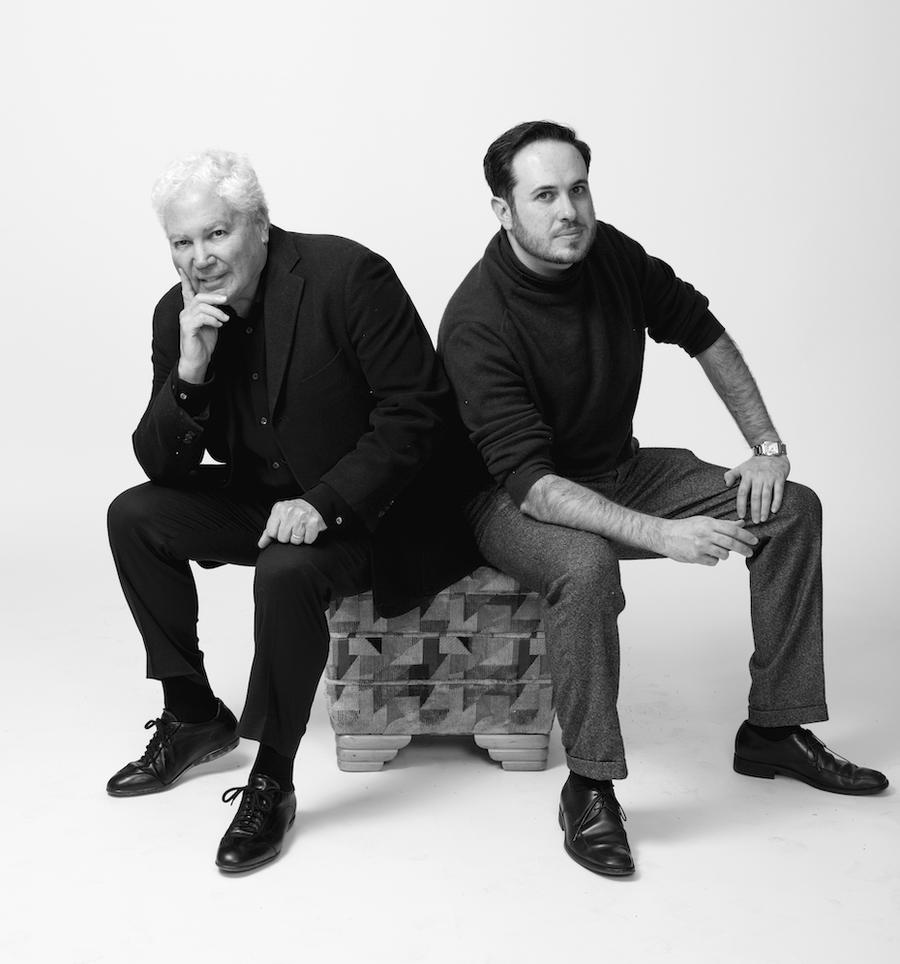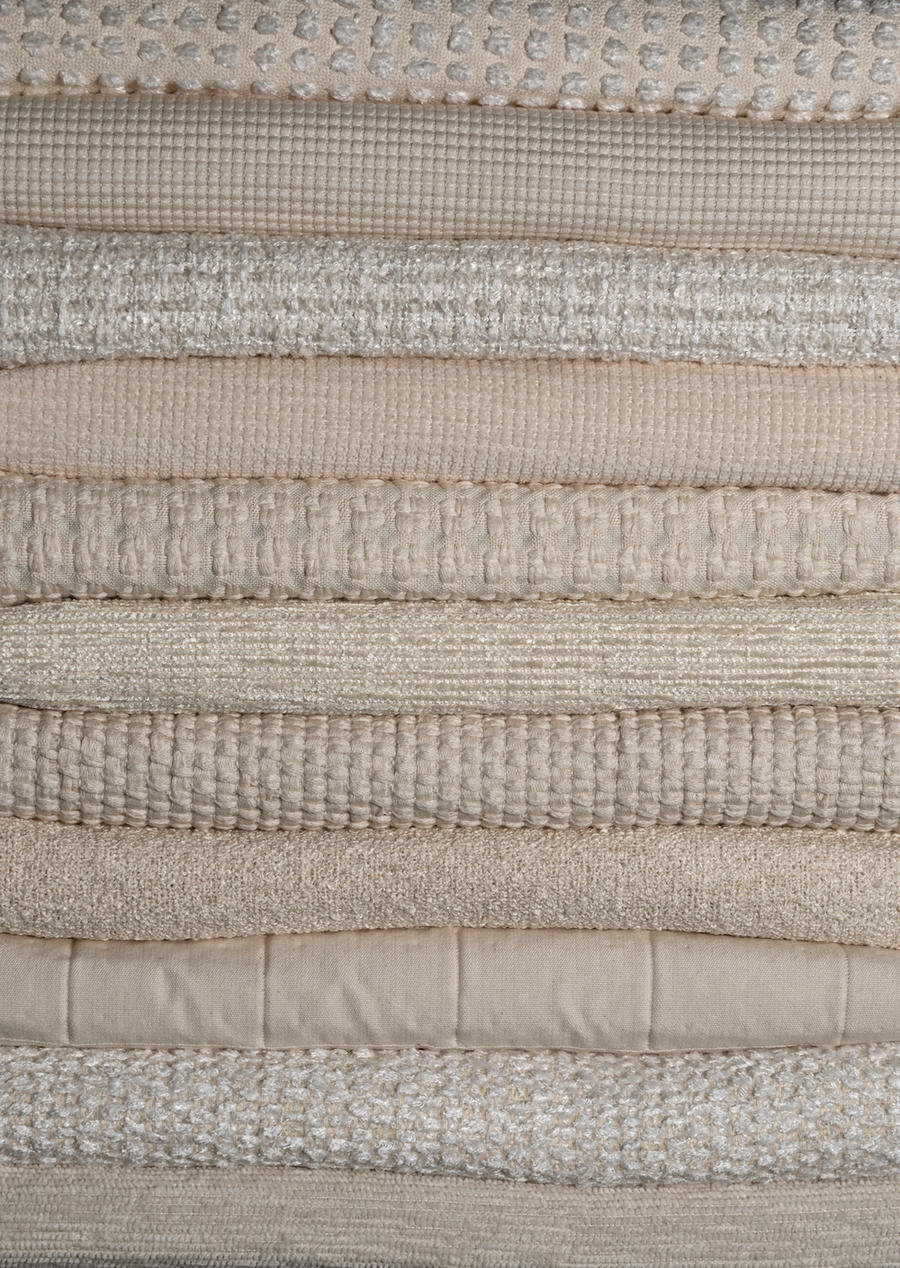Designers who set foot in one of the four John Rosselli & Associates showrooms looking for fabrics have, historically, come in search of a striking pattern. Hand-blocked paisleys on a linen ground? Yes. Perfectly imperfect geometrics in rich shades of saffron, persimmon and indigo? Of course. Evocative, winding florals in delicate hues—and bright ones too? It’s all there—a rich trove of worldly designs, a globe-trotting travelogue hanging in the wings.
The company’s first showroom, in New York’s D&D Building, began as an outpost for Rosselli’s antique reproductions, as well as upholstery and lighting lines. “When the third or fourth designer in one afternoon came in with their client, then runs out to another showroom to borrow a fabric wing, brings it in and drapes it over the chair to show the client how it’s going to look in the fabric they selected, I said, ‘Well, this is ridiculous. Why don’t we sell fabric?’” recalls Jonathan Gargiulo, the nephew of antiquarian John Rosselli, who joined his uncle’s business in 1985 and was instrumental in opening the flagship showroom, as well as outposts in Chicago, Washington, D.C., and Dania Beach, Florida, in the 1990s.
Within a week, Gargiulo recalls, longtime friend (and owner of the Rose Cumming textiles line) Ronald Grimaldi strode into the showroom with a similar assessment: The space needed fabrics. Three months later, John Rosselli & Associates debuted the Rose Cumming textile department—and in the three decades that followed, the showroom has come to represent some of the biggest names in textiles, including Peter Dunham, Peter Fasano, Lisa Fine, Carolina Irving and John Robshaw.
“The common denominator was prints,” says Gargiulo.
That changes with the arrival of Glant Textile—a brand renowned for its textures and colors—which joins Rosselli’s New York showroom today and will arrive at its D.C. location in the coming weeks.
The new addition doesn’t represent a shift in direction so much as a broadening of the showroom’s assortment. “A lot of good designers would say, ‘What solid do you have that works with this?’ or ‘What do you have that’s got a little bit more texture for the sofa?’ We had a void,” says Gargiulo. “So when the opportunity presented itself and Glant approached us to join us in New York, it just seemed like a natural fit.”
For Gary Glant, who founded the textiles company in Seattle in 1976, the move comes after three decades of representation by Hines & Co. in both cities. “We have been represented in New York for 30 years,” he says. “But everybody gets older. We are very loyal, and we did not come to the decision easily, but it was time for a change. When the idea of Rosselli came up, we studied them, we met with them—and we are very excited to think about them being the future.”
Gary and his son Adam Glant, who officially joined his the company in 2011 after spending much of his childhood in the Italian town where the family-owned mill is located, say that one of the challenges of finding the right showroom partner is finding a space that carries a mix of lines at a similar price point and quality, but also one where your brand can stand out in the mix. With John Rosselli, they feel they struck the perfect balance. “We are very much about texture, with deep ranges of innovative texture, color and neutrals; they primarily have been in the print market,” says Gary. “We really round them out—we are there to complement their sales in other areas as well as to be a standalone that they are able to offer.”

Both brands are multigenerational family-owned enterprises—a fact not lost on either party. “Relationships are everything in this industry,” says Adam. “It’s wonderful when you really build lasting friendships with people you work with.”
“Representation is like a marriage: You would probably rather not marry the wrong person,” adds Gary. The company’s first showroom partner, Kneedler Fauchère, is an ongoing collaboration that spans more than four decades. “When I started this business, I stumbled upon a furniture manufacturer in Architectural Digest—which, unbeknownst to me, was the leading high-end multiline showroom group in the country. Right off the bat, they loved what I was doing and took the line,” he recalls, before snapping back to the present day. “Have you seen The Crown?”—referring to the Netflix series, which he recently binged with his wife—“It is full of poor marriages. It just sort of supports the idea that you shouldn’t go into the wrong representation just to go into a representation.”
This fall, Gargiulo visited the Glants in Seattle to continue their conversations about a potential partnership. “I was their guest—I was in their home most of the time,” he recalls. “Gary took me to the museum, down to the wharf, to the yacht club for lunch. They were so generous, that’s what really struck me. I’ve been with John Rosselli now close to 40 years, so I’ve had the opportunity to work with a lot of different companies, and they were just so down to earth—a family. Of course it’s like a marriage, because they’re family-owned and we’re family-owned. I’m not knocking anybody, but it’s not about a bunch of suits sitting at desks. It’s not corporate. It’s not somebody making decisions based on numbers or yards sold. When I flew out to Seattle, I fell in love with what I saw, with the staff there, and with the Glant family. They must have been equally pleased, because before I left, Gary was like, ‘Well, we’re going to do this.’ And here we are now.”


Glant’s 1,700 SKUs are now installed on boards that flank John Rosselli’s sample desk—one side organized by color and the other by texture. “It’s a duplication—and from a showroom point of view, it’s a wild expense,” says Gargiulo. “But I think it’s good to give them the added exposure, because designers shop two different ways. You have ‘I’m looking for a beige or a gold or a yellow or a blue,’ and ‘I’m looking for a mohair or a velvet or a linen.’ So depending on how the designer wants to shop, it’s over there or it’s right here.”
Solids are often the unsung heroes of a design scheme. We may mark eras of design by the prevailing ‘it’ pattern, from cabbage roses to ikat, but a good, textured solid is a foundational element of a room—and, increasingly, the star.
“In the media, it’s often about the wow factor of a new print that really grabs attention,” says Adam Glant. “But I think texture transcends that a bit and continues—great neutrals stand the test of time. My dad has always said that our job is to create beautiful textures that are in beautiful settings with amazing art. We don’t ever want our product to compete with the art; we want it to stand up to and be beautiful alongside the art. We can go into a lot of different design schemes and [work within] many different design styles. I think that’s one of our major advantages—we can take on whatever look a designer is hoping for in an installation. That’s really what we want to bring to the table for Rosselli— that ability to go into any ... scheme.”





























